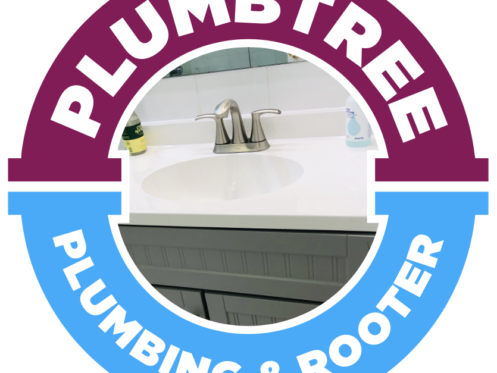A leaky faucet can be very annoying. The dripping sound is often a constant reminder of the water you are wasting. It is not something that you should get used to. Rather, you need to fix the leak in order to stop the wastage. Repairing a faulty faucet should not be an expensive or complicated process. You only need to know the type of faucet you are using and how to repair it.
Plumbtree Plumbing & Rooter has a long history of helping residents of San Jose, CA, solve their plumbing problems. We are always available and ready to help you fix your leaking faucets as well as other plumbing issues.
Causes of a Leaky Faucet
Faucets come in different designs based on the type. Most faucets have either compression valves or cartridges. The four main types of faucets are ceramic disk, cartridge, compression, and ball type. Leaks in each type of faucet may be due to an aspect of their design. Repairing them would require you to understand the design and the cause of the leak.
For a compression faucet, leaking may be due to the wearing out of the rubber washers that seal the valve seat. Compression faucets are common in older homes, and they shut off the water when the handle is turned, which compresses the stem washer. Over time, the washer, which is either rubber or silicone, wears out. When the washer wears out, it causes a leak, regardless of how hard you turn off the water. In such cases, replacing the washer would be the only solution to fix the leak.
Single and double-faucet handle faucets have sink cartridges, made of plastic and metal, under the handles. The cartridges control the flow of water. It’s not possible to repair the cartridges, but you can remove and replace them as a whole. The cartridges are usually very specific to the brand and model of the faucet. Thus, you need to get the exact faucet that fits your faucet.
Fixing a Leaking Faucet
When fixing a leaking faucet, there are a few steps you need to take before you begin. First, you have to shut off the water under the sink. You also need to cover the drain with a rag. The rag will help catch any parts that you drop as you work. As you remove the parts, lay them down nearby in the order in which you remove them. That will make it easy for you when you have to return them later.
Tools and Materials Needed
Tools
- Utility knife
- Set of Allen keys
- Adjustable wrench
- Flathead screwdriver
- Channel-lock pliers
- Philips-head screwdriver
Materials
- Silicone faucet grease
- Replacement faucet cartridge (if replacement is necessary)
- Assorted stem washers and screws
1. Fixing a Leaky Cartridge Faucet
1. Remove Screw from the Handle
Once you have the water off, you need to remove the faucet handle. Start by removing the screw on the side of the handle. Use the Allen key to turn the screw counterclockwise to remove it.
2. Remove the Handle
Once the screw is off, the handle will be free to come off. Lift the handle to remove it from the faucet.
3. Loosen the Retaining Nut
The faucet has a thin retaining nut to hold the sink cartridge in place. Using the pliers, turn the nut counter-clockwise to remove it.
4. Remove the Sink Cartridge
Once the retaining nut is off, the sink cartridge should be free to come out. Gently pull it up in order to remove it. In case it is stuck, gently wiggle it to make it loose enough to come out.
6. Apply Silicone Grease
Prepare the replacement faucet cartridge by applying a small amount of silicone faucet grease to it.
7. Insert Replacement Cartridge
After greasing the replacement cartridge, align it with the slots on the faucet. Slide it down until it fully sits. Then use the wrench to put the retaining nut back.
8. Reinstall the Handle
Put back the faucet handle and tighten the screw using the Allen key. Once you have the faucet fixed, turn on the water supply valves to test for leaks.
2. Fixing a Compression Faucet
1. Remove Handle
After shutting off the water, use your Allen Key or Phillips-head screwdriver to remove the handle. For faucets that may have a decorative cap, use the flat-head screwdriver or the edge of a utility knife to remove the cap.
2. Remove Valve Cover and Valve Stem Assembly
If the faucet has a valve cover over the valve stem assembly, use the pliers to unscrew the knob. Then grip the hex head of the valve stem assembly using the pliers and unscrew counter-clockwise to remove it.
3. Remove the Washer Screw
Using the Phillips-head screwdriver, remove the screw that holds the stem washer in place to remove it.
4. Remove the Stem Washer
Using the utility knife, pick the stem washer out of the valve stem assembly.
5. Replace the Stem Washer
Place the new stem washer firmly on the valve stem assembly and screw it over the top.
6. Assemble the Faucet
Put back each of the parts you removed, starting with the valve cover, the handle, and finally the decorative cap. Turn on the water and let it run for a minute to test for any leaks.
3. When You Need to Replace Your Leaking Faucet
1. If Your Faucet Is Over 10 years Old
Old faucets can develop issues that repairs may not solve. Although repairs may temporarily work for such faucets, it does not take long before another problem arises. You may end up having to repair the faucet regularly, which would be a waste of time. It is, therefore, better to replace the old faucet to save on the cost of repairs and time spent repairing the old faucet.
2. When Repairs Take Too Long
A faucet repair should not take too long. On average, it should take between 30 minutes and an hour to fix it. If it takes you hours to carry out the repairs, that may indicate a bigger problem. It would be easier to replace the faucet than to solve the problem.
3. When the Cost of Repairs Is Too High
There are instances where a cost analysis may indicate that replacement is better than repair. If you analyze the cost of repairing your faucet against the cost of replacing it and realize that the cost of replacement is not so different from the cost of repairing it, then you should replace the faucet. That is usually the case for inexpensive faucets. However, for expensive faucets, it may be more affordable to repair the faucet.
4. When Repairs Don’t Work
As mechanical devices, faucets are bound to wear out due to constant use. If repairing the faucet does not stop the leaking, that may be an indication that you need to replace the faucet.
Call a Professional
Sometimes fixing a leaky faucet can be complicated and cumbersome. Rather than engage in a futile exercise that would not solve the problem, you need to call a professional plumber to help you fix the leaky faucet.
Plumbtree Plumbing & Rooter has a team of qualified plumbers who can help you with your plumbing problems. We offer 24-hour emergency plumbing repair services to the residents of San Jose, CA. We also provide gas services, water services, and sewer services.
Call us today to schedule an appointment.

